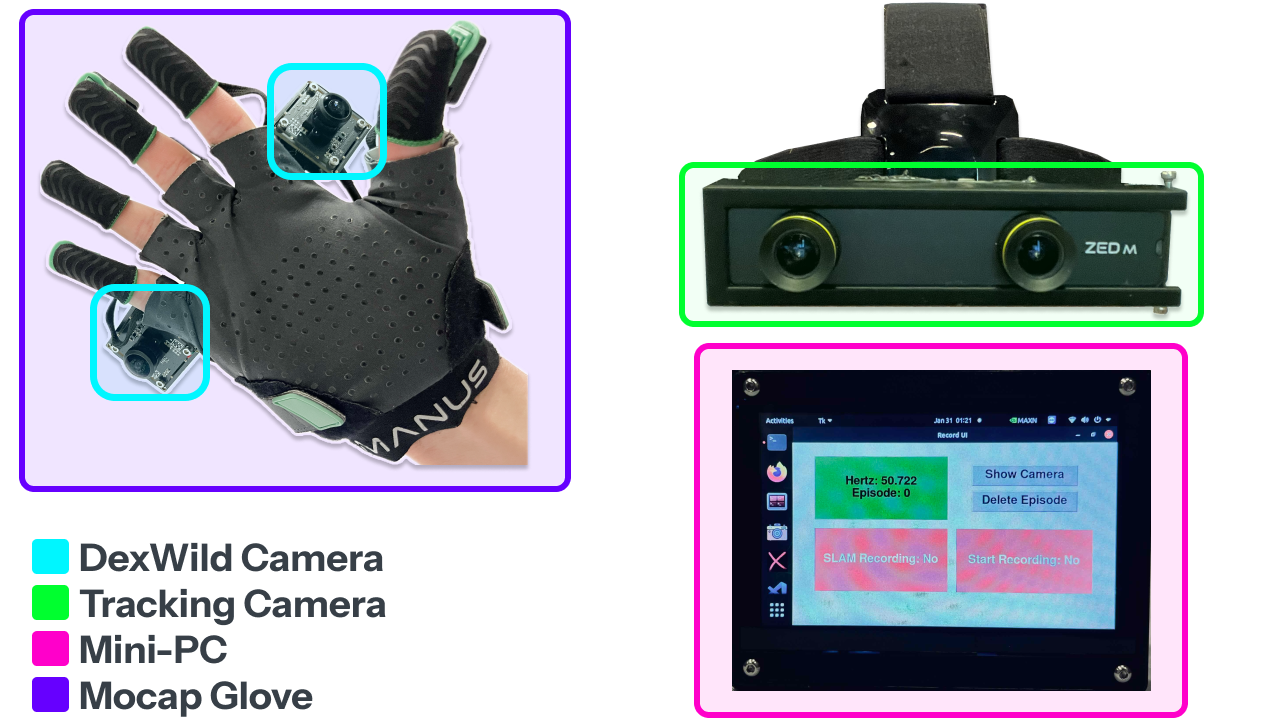DexWild-System

DexWild-System is a portable, high-fidelity, and embodiment-agnostic data collection system capable of efficiently gathering dexterous human hand data across many environments. We employ a team of untrained data collectors and collect 9,290 demonstrations across 93 diverse environments at 4.6× the speed of teleoperation.
We scale up data collection in diverse environments...
DexWild Aligns Humans and Robots
DexWild aligns both the observation space and the action space between humans and robots. We take advantage of palm mounted cameras, that provide us with a wide field of view that can see the task and environment clearly, but cannot see much embodiment specific information. This allows us cotrain data collected from different embodiments effectively. We convert all hand poses to a 17 dimensional joint angle space and all wrist poses to relative actions 6D space.